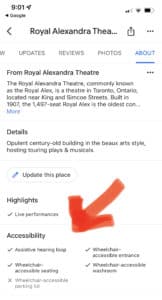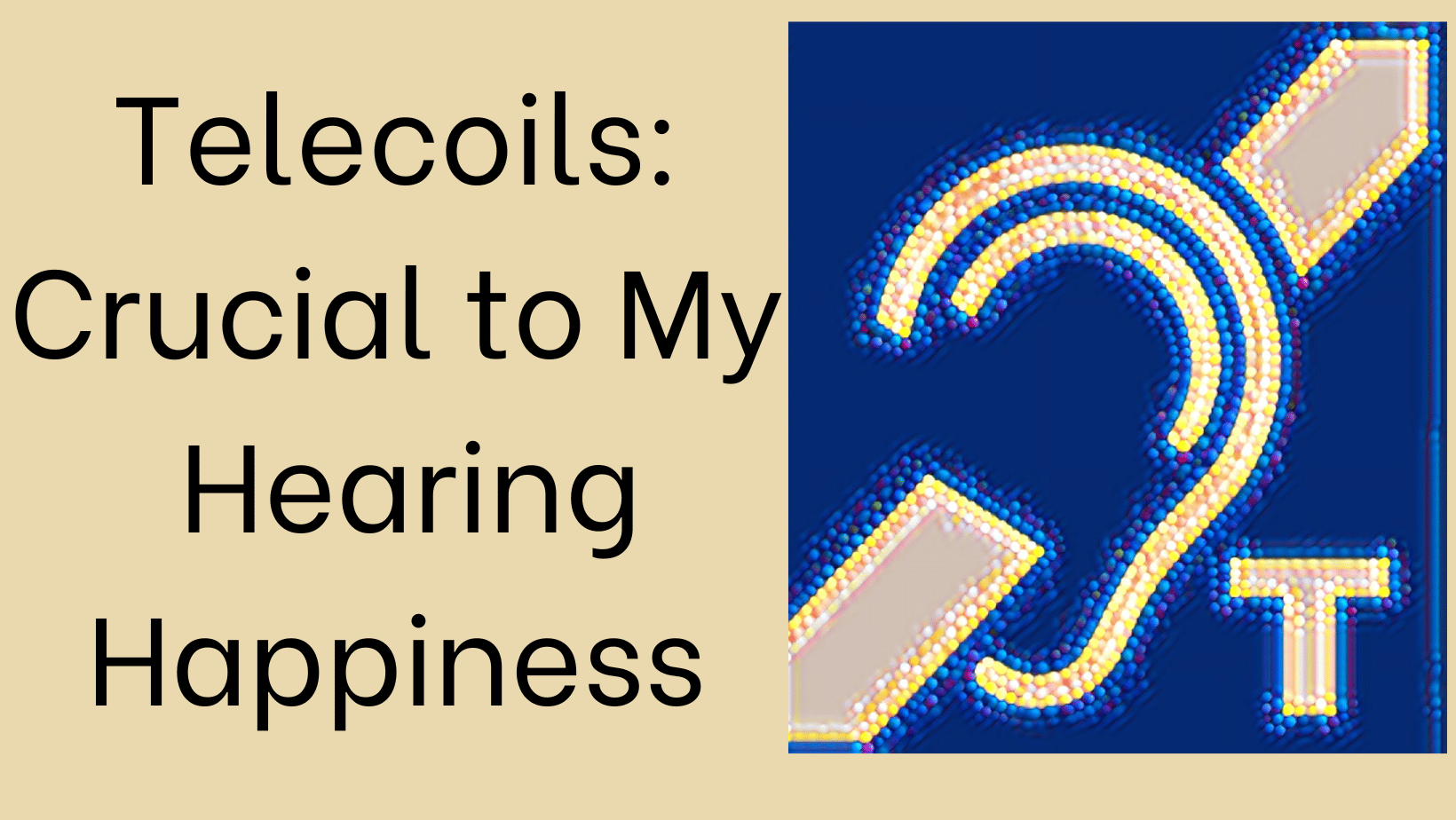I’ve been writing about telecoils and looped things for a long time now. So has almost every hearing health advocate I know, especially the indomitable Dr. Juliette Sterkens.
Why do we keep shouting and writing about it? Because we’re passionate about their beneficial, positive impact on our quality of life. Because too many hearing care providers still pooh-pooh telecoils as a important, even necessary, communication tool.
It’s old technology, they say.
To this I responds, “Yeah, so’s the wheel, but it’s still getting us where we want to go!”
Telecoils work. They connect us to the world with rich and beautiful sound, not through soundwaves that are vulnerable to distortion when they reach our hearing system, but through simple brilliant, technology. I get teary just thinking about the telecoils in my hearing aid and cochlear implant.
Don’t get me wrong, Bluetooth is fabulous but it doesn’t fill all the communication gaps. I can’t use a landline with it. I can’t listen to a lecturer in a large hall or a show in a theatre or understand the person behind the counter in my hearing clinic with Bluetooth. These are all things I can do in a looped environment through my telecoil-equipped hearing aids.
Both the Hearing Loss Association of America (HLAA) and the Canadian Hard of Hearing Association (CHHA), as well as associations in other world areas, are putting serious weight behind the promotion of hearing loops and telecoils. But a few things have to happen to make it all work.
- A hearing loop must be installed in a space and appropriately advertised. Therefore, venues must first understand how a hearing loop makes their space accessible to more people – their clients, patients, parishioners, etc.
- People with hearing loss must know about telecoils. Therefore, hearing care professionals must encourage telecoil-equipped hearing aids with telecoils for their clients.
- Hearing aid/telecoil users must know where they can access a hearing loop, i.e., in their banks, theatres, churches. And when they use one, they should let others know about it.
And here’s exciting news! In a long overdue benefit for telecoil users. Google Maps has recently begun adding hearing loops—alongside wheelchair access—as an accessibility attribute within Google Maps business profiles. Try the app, use the loop and share the good news. This website article tells you how to use this great service.

A Google Maps listing showing loop availability at a Toronto theater.
If you are not already using telecoil, read about it and learn where you can use it and how it will improve your life. Talk to your hearing care professional (HCP) about it.
If you are already a telecoil user, you can still talk to your HCP to help broaden awareness. Ask them if they promote the use of telecoils with other clients (and if they give you the “it’s old technology” line, consider a new provider). Ask them to hold hearing loop demos in their offices and encourage their support in promoting the installation of hearing loops in their communities.
This HLAA Hearing Loop Toolkit is a valuable resource: https://www.hearingloss.org/programs-events/get-hearing-loop/hearing-loop-toolkit/
Telecoils and hearing loops are used around the world. Little ones in your own living room. Big ones in big halls and theatres. Your phone, your bank, anywhere.
Telecoils are crucial to my hearing happiness – what about yours?








Another awesome and informative column, Gael! Thanks to your efforts, consumers arrive “armed” at their providers’ offices with information about technology that works for those who go through life wearing microphones on their ears.
Knowing how to buy hearing devices, what features are important and which ones are “nice to have”, and how to get the most from them is not something that we are born with. It requires a willingness to dive into this. Do some work. Read. Explore blogs that advocates like Gael and Shari, have put a lot of time and effort into. Or read this article on the National Council on Aging (NCOA) website: http://www.ncoa.org/article/what-older-adults-need-to-know-about-hearing-loss
And while it is true that hearing aids and cochlear implants can do some amazing things, they do not give the users normal hearing. For that, users must avail themselves of a variety of solutions. Solutions that are private (hearing the TV, hearing in a noisy restaurant or in the car, on your landline or smartphone) and solutions that require us to self-advocate, speak up and search out places that offer assistive listening systems and hearing loops. And I haven’t even addressed the communication strategies and self-advocacy skills you and Shari address in your terrific Hear & Beyond book.
While I cannot promise readers of this column that a telecoil can make your hearing loss magically go away, I can promise that having access to a telecoil is important and can make a HUGE difference in a variety of places. Listen to the difference a telecoil made at this lecture: https://www.youtube.com/watch?v=RcfqmVb-DmU
Thank you, Gael, for lending your voice to support telecoils, hearing loops, and getting the word out via Google Maps! Yes, telecoils are crucial to my happiness! We are passionate about telecoils and hearing loops because they deliver a simple, reliable, and immediate access to clear sound. Telecoils and hearing loops enable us to understand what other people are saying. If we can’t understand what is communicated, how can we stay connected with people we love and the world around us?
As you and Shari point out in “Living Skillfullywith Hearing Loss,” consumers need telecoils and BT, as well as communication strategies. We need all the tools in the toolbox. I believe the industry must look to expand our options rather than limit our tools for effective communications and access. Readers, can you help us put hearing loops on the map?
Absolutely. I love using a TLoop where they’re available. My local cinema has one and it’s well maintained. They also have Captiview and Open Captioned movie sessions. I’ve been horrified to hear Audiologists describe Hearing Loops as old technology! I try to disguise my horror and politely say how much I love using TLoops in public spaces and my beloved local cinema. However, having read your column I feel the need to invite myself to the next Audiologist conference in Sydney and broadcast the message to all of them. It would go:
1 Instal T switches for all your clients
2 Educate the individual and their partner
3 Provide a list or instructions on how to find Assistive Hearing Loops.
Also encourage businesses and theatres to install, maintain, educate their staff and advertise Assistive Hearing Loops.
Grrrrrrrrrrrr!